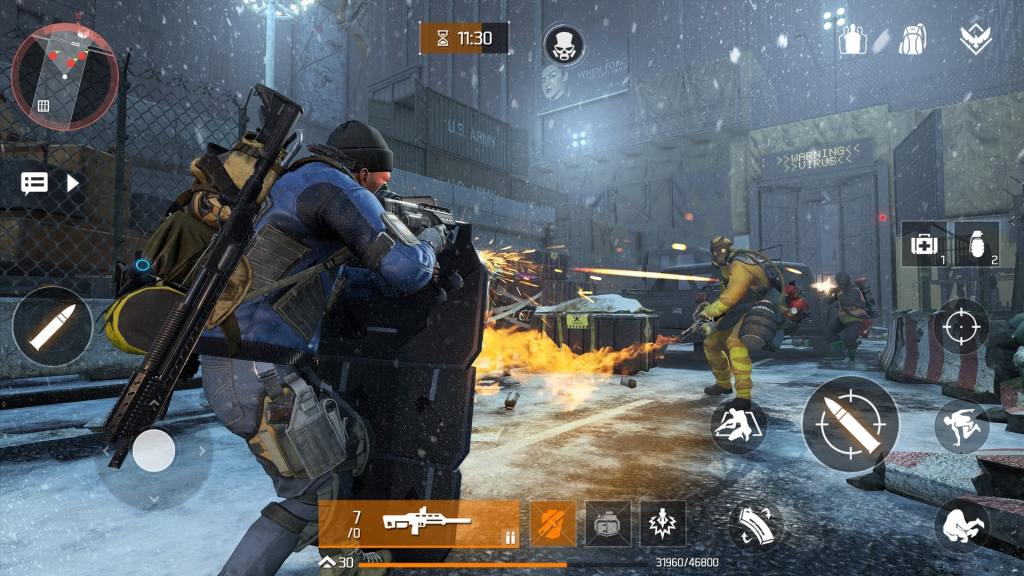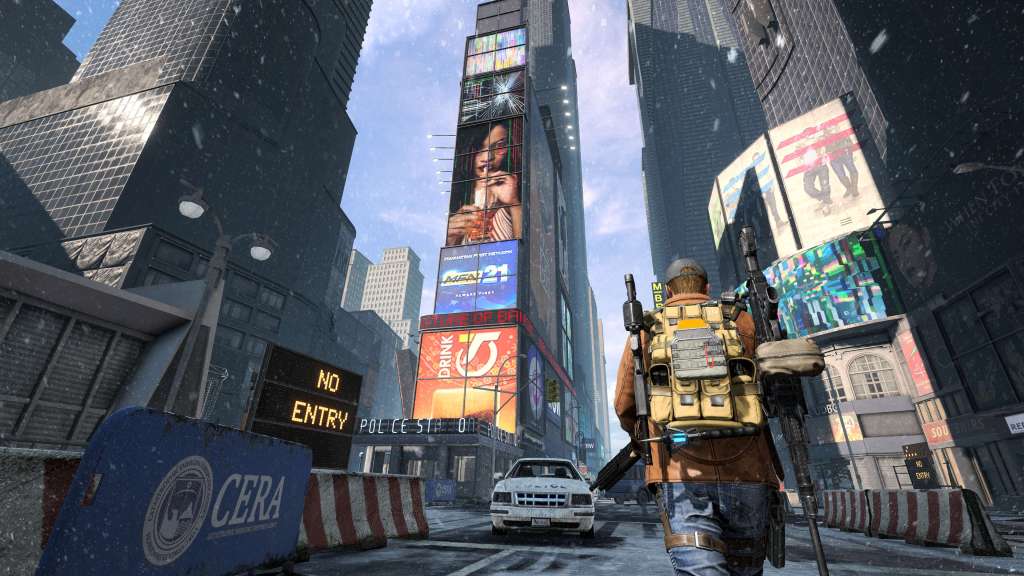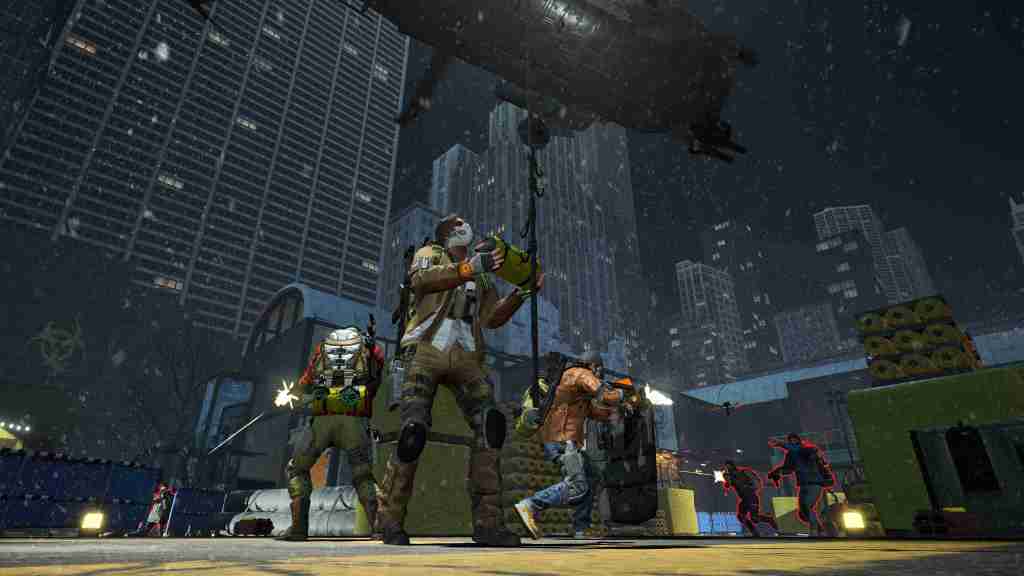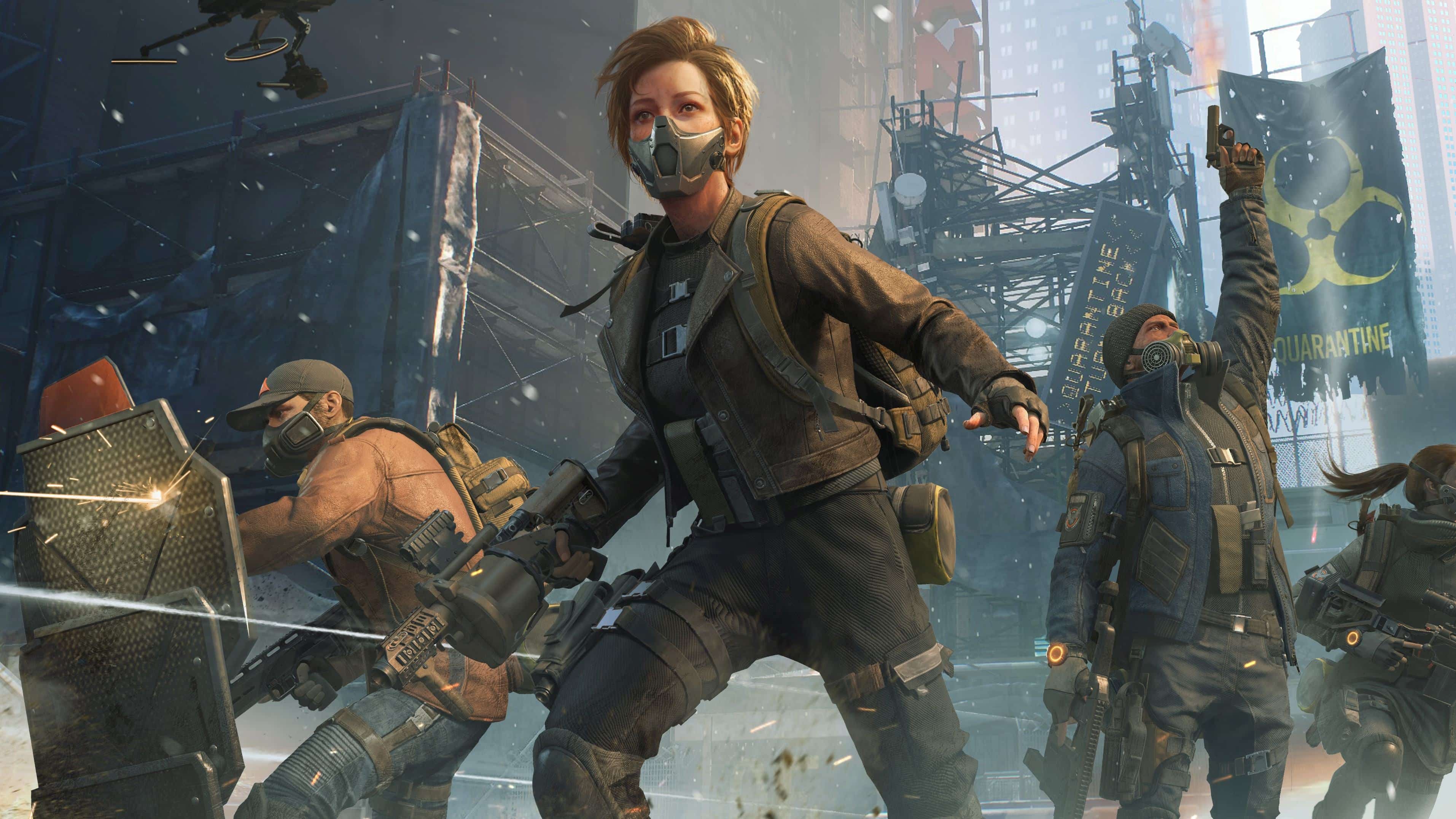In my time playing The Division Resurgence so far, there are several times when I almost forgot that I was playing a mobile game. As someone very familiar with the third-person shooter series, I immediately felt at home as I ran from cover the cover, activated near-future gadgetry to lock down my position, and took potshots at unruly ner-do-wells as a self-appointed and morally questionable keeper of the peace.
With a controller in my hand, it felt like I was playing a free-to-play follow-up to The Division 2 on the PlayStation 4. The sheer familiarity of the gameplay flow meant that the game felt comfortable more than it did ambitious, but this achievement in itself is, when you consider that I was playing on an iPhone rather than a TV, pretty remarkable.
Resurgence acts as a side story to Ubisoft’s post-apocalyptic Tom Clancy’s franchise, which imagines a world torn asunder by a viral pandemic. As the chaos unfolds, an elite group of special operatives known as The Strategic Homeland Division – sleeper agents masking themselves as ordinary citizens – are called into action to maintain order. In the franchise’s overall narrative, Resurgence follows the movements of the first wave of agents called into action in New York City.
Ubisoft pitches Resurgence as a ‘fully fledged Division experience,’ and as a person who has spent quite a significant amount of time in previous Division games, there is a lot of truth to that.
Read: Ubisoft Forward 2023 – All the announcements and trailers
The thing that is immediately recognisable is the weight feel and flow of the game’s movement and firearm combat. The encumbered run of your protagonists as they carry a backpack full of supplies, and the feel of them slamming themselves behind cover is executed well. As is the sharp feel of popping out of cover and firing off a volley at distant assailants. Even with some of the game’s streamlined touch screen controls, the distinct feeling of a Division game well and truly is present in Resurgence.

Of course, to cater to the array of actions and movements that exist in previous Division games, the touchscreen interface, as well as the precision needed to accurately mimic its gunplay, there is some additional complexity compared to other mobile shooters. The array of buttons on the virtual controller are many, and if you opt for the maximum amount of precision in taking a shot (a hunting rifle you find early on will force you to think about how seriously you want to take things), you’ll find yourself juggling inputs on either side of the screen. You’ll move in with the left thumbstick, enter cover with a dedicated button, pop out of cover and aim with a dedicated mini-joystick on the right, and then fire with another button on the left, something I still haven’t quite gotten used to.
Read: The Division Resurgence gets iOS and Android playtest in June 2023
Of course, Resurgence has several assistance features that do things like automate certain movement and cover options, or augment your aiming with auto-aim, gyro controls, and more. But the absolute best option is to connect a controller – or even a keyboard and mouse, which Resurgence also supports – which really blurs the line, making it feel almost exactly like any other Division game.

That’s what Resurgence is. It adopts the same kind of design philosophy of being an MMO shooter with a gritty, militaristic narrative, with the same morish RPG loot and mission system that keeps you wanting to do just one more mission. Or maybe two.
The New York set pieces are very reminiscent of the first Division game, though I haven’t seen the full extent of the missions, and can’t comment on whether they reach the same kind of grand scale. The map is still open world, there’s a day/night cycle and weather system, and it still features the same cooperative and competitive modes, including the series’ signature Dark Zone, a high-risk multiplayer zone where you can betray other players as you strive to secure exceptional equipment.
It’s all just on mobile this time, instead of console, a decision likely made to cater to a much bigger audience than anything else – one of the first narrative beats being in New York’s Chinatown is telling.

And there’s also the matter of the game being free-to-play, and the potential earning for the company via that vector. Though we didn’t encounter any egregious roadblocks during our early access with the game, Ubisoft tells us the monetisation elements of Resurgence would not be locked down for some time, so that’s something to keep an eye on as it moves towards its public release.
But on its face, Resurgence impresses as a like-for-like translation of what The Division series does well on a mobile device. The narrative conceit is enough to entice existing Division enthusiasts off the primary platforms, and the loop is familiar and satisfying enough to keep you there. The real questions will come in how it differentiates itself from other existing and upcoming mobile titles, and how the game continues to operate in free-to-play form in the long term.
The Division Resurgence will be free-to-play when it’s eventually released on iOS and Android devices. A closed beta test will be held for certain regions beginning June 2023. You can find out more on the official website.





